XIII. Höfðar, x, 2020
X (at) lhi.is
The context of the design course Urban Lab - Design Agency for the academic year 2019-2020 is the area of Höfðar which is located in Reykjavik.
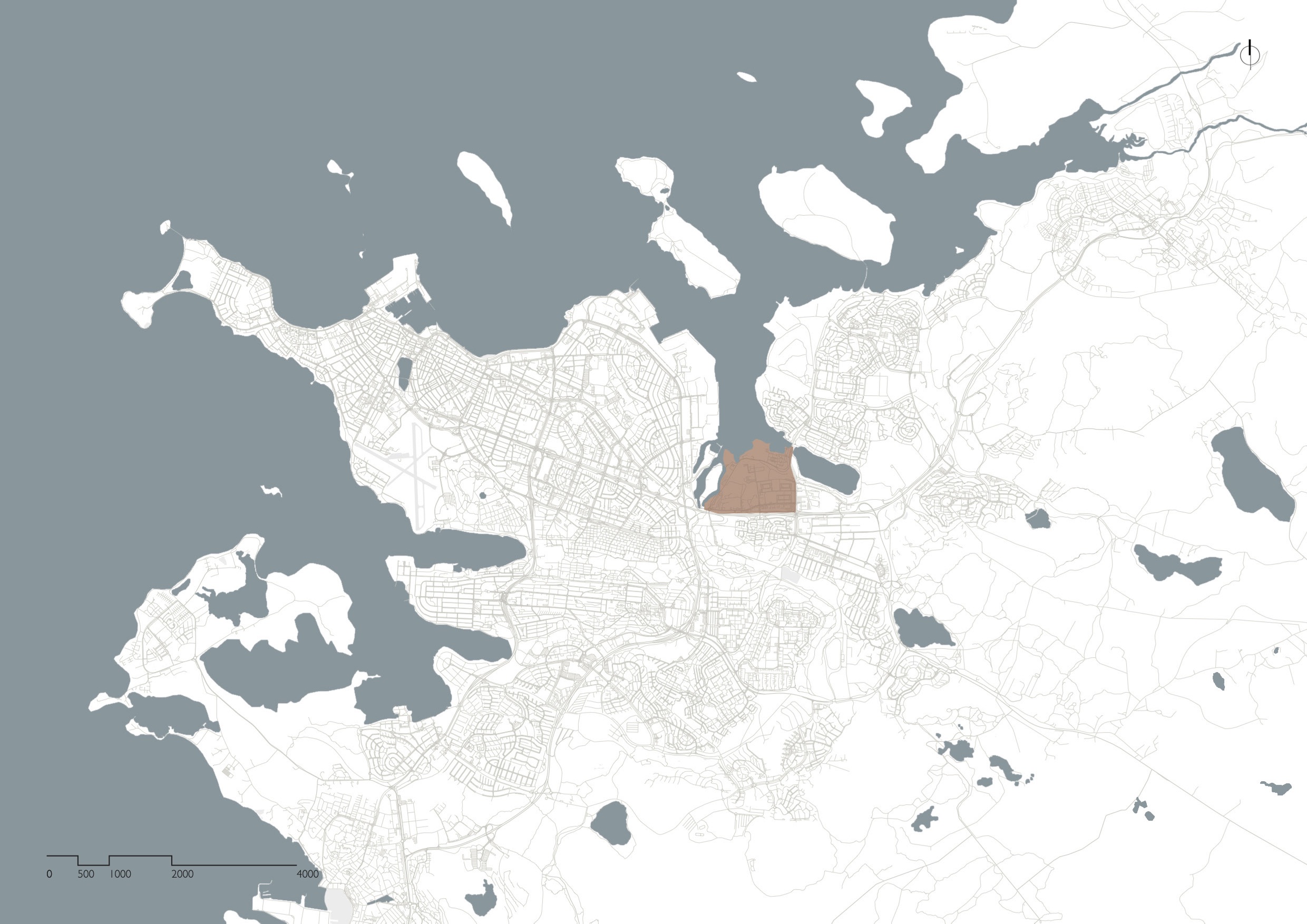
Map of Reykjavik with Höfðar in evidence
Höfðar hosts 2,751 inhabitants and more of 300 activities which altogether offer employment to thousands of people.

Map of Höfðar
54% of the surface of Höfðar is covered by water repellent materials which interfere with the natural water flow.

Water repellent surface in Höfðar
There are 8,764 parking lots in Höfðar which altogether cover a surface of 109,550 square metres.

Map of the parking places in Höfðar
By directly observing their usage it is discovered that on average only 50% of them is in use.

Map of the use of the parking places in Höfðar
These information tells us that a new plan for Höfðar must be envisioned one that is ecologically robust and socially vibrant.
In the Master Plan for 2030, Höfðar will be deeply tranformed: 6,200 new residential units will be built and ultimately support a population of over 15,000 inhabitants.

Proposed plan of Höfðar for 2030
This massive transformations give us the opportunity to designing Höfðar and reflecting upon contemporary urban living, to rethink the relationship among us and nature. A manifesto that embodies these intentions has been developed and it reads like this:
The Manifesto for Höfðar
Bigger context
When developing Höfði we should consider what purpose the area can serve in a bigger context. Reykjavík has been planned around the cars’ idea, which includes zoning and urban sprawl. This has created many problems both in urban planning as well societal. Höfði offers a good opportunity to reverse this development. The location of Höfði, close to the centre point of the urban area of Reykjavík, as well as the large unbuilt area, are important conditions for these changes.
What are the effects that Höfði should have on Reykjavík / Iceland / Earth?
A different transportation culture
Höfði will be the first area in Reykjavík to be developed with borgarlína (bus rapid transit system) in mind. It is important that we take radical steps in making borgarlína the first choice of transportation for most of the inhabitants of Höfði. We want to change the transportation culture of Reykjavík and to do that we need to create a walkable environment.
Organic evolution of a community
To create this sort of neighbourhood we need to make sure that certain essential services are present in a walking distance. The challenge is to integrate new residential dwellings within an existing environment. We want to create an opportunity for more diversity in the area, to achieve this we need to design adaptable architecture that is an architecture that is open to transformation and for a variety of services to evolve in an organic way.
Nature in everyday life
We want to make nature a part of everyday life of the people of Höfði. Nature can be translated in different forms: urban agriculture, coastal walks, riparian ecosystems. We would like nature to serve a purpose in the infrastructure of the area and in improving public spaces. The local geology, flora, fauna and ocean must all be taken into consideration.
With development there is always a certain disturbance of the ecosystem. We emphasize the importance of minimizing this disturbance. We need to be aware of the climate crisis and of its irreversible effects on cities and nature.
Green construction
We need to demand higher environmental and ethical standards not just in terms of materials and energy consumption but also in terms of processes and labour conditions. It is also important to consider the ecological and social benefit of repurposing buildings as a more ecological and social just way to imagine the future.
The effect of Höfði
It is clear to everyone that a societal change of behaviour is needed if we wish to prevent the worst-case scenario predicted by climate scientists. The effects of Höfði from an environmental perspective are limited, however we can create a model of ecological and ethical living. Iceland could lead the way into the future for radical experimentation in the way cities are planned and constructed.
Thirteen stories have been consequently developed by the second year students in architecture at the Iceland University of the Arts.
This is one of them.


 I think that over the years, even with all the intellegence, resourses and technology we have- we as humans have put ourselves first for too long.
I think that over the years, even with all the intellegence, resourses and technology we have- we as humans have put ourselves first for too long. Who are we to say that we do come first?

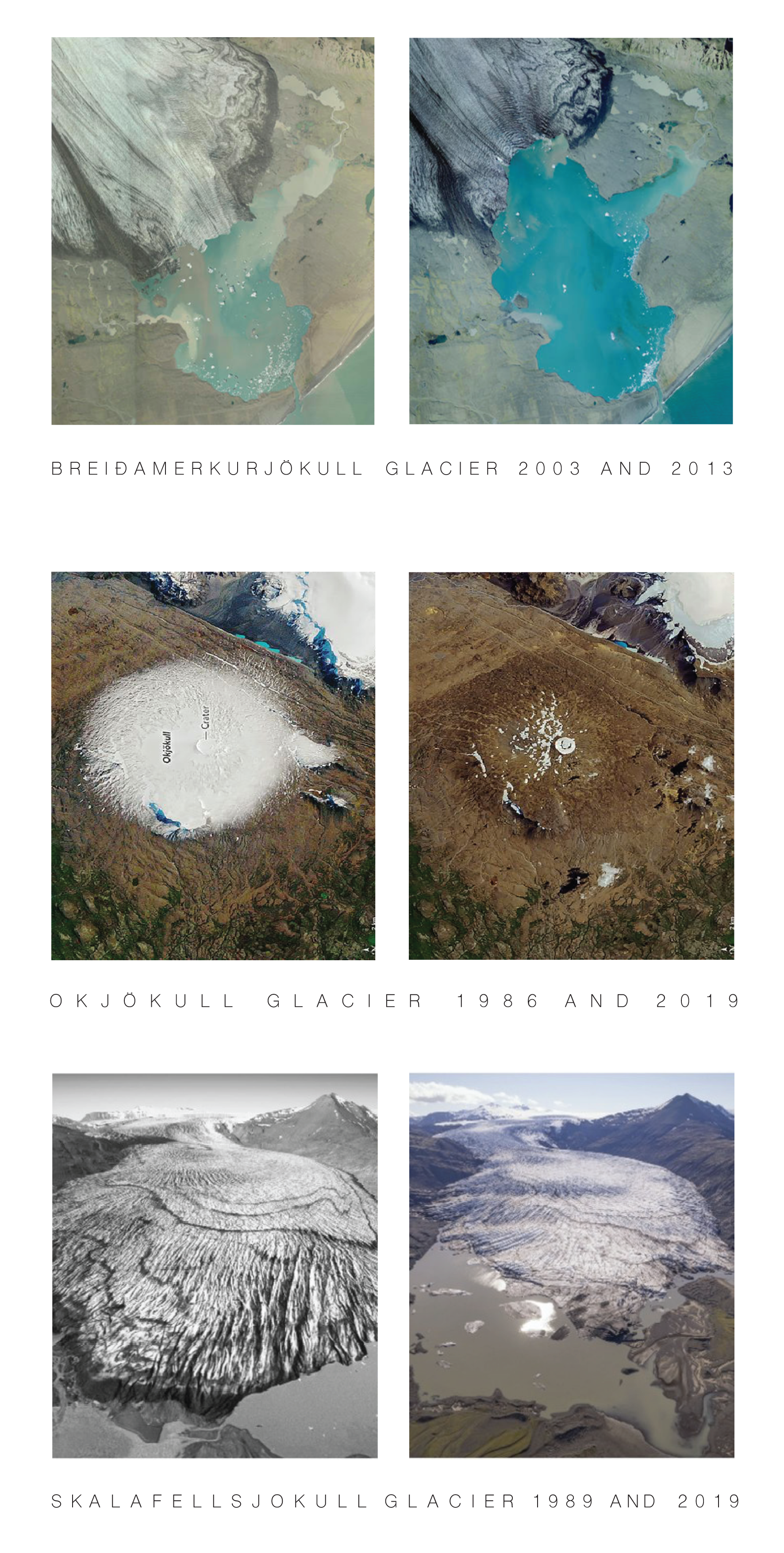
LOCATION PLANS:
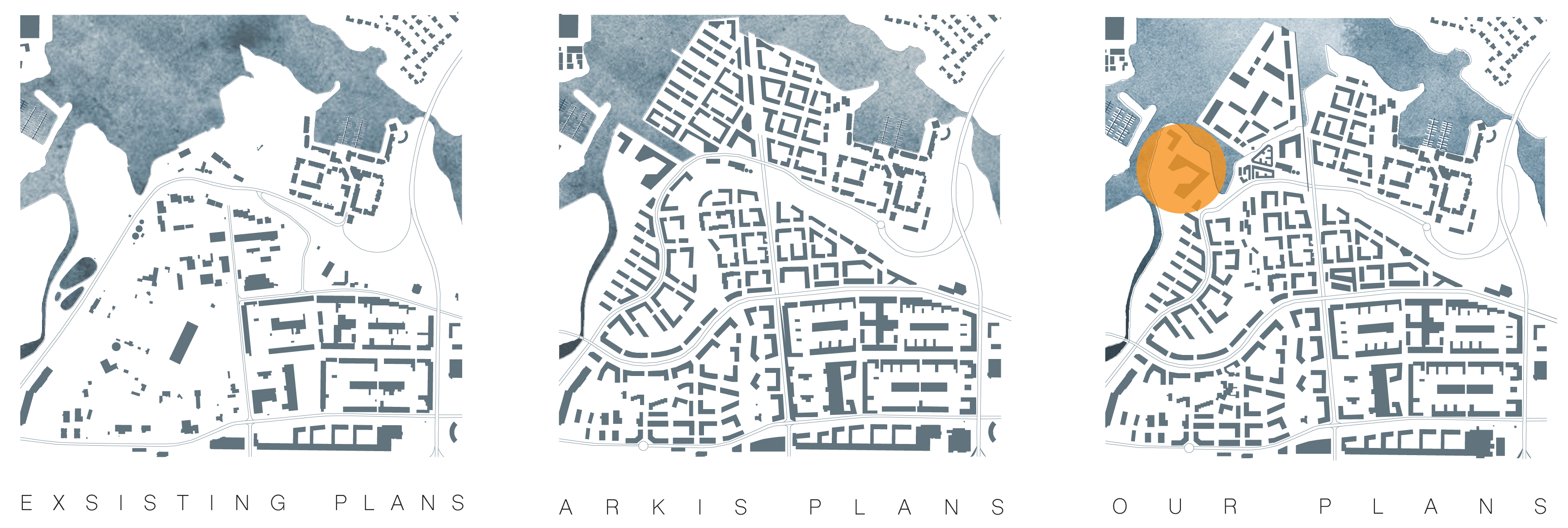
Potentially working alongside Skograektin - the Icelandic Forestry Associaton to conduct an afforestation scheme at the chosen site, which involves establishing vegetation in areas that have never been forested before. Further providing the oppertunity to involve members of the community, volunteers, school groups etc, getting them involved in the whole process from the planting to the picking - promoting the importance of education towards nature.
Whilst replanting the area, I will also create new paths throughout which are accessible to all, with the aim to encouage people to use this space which currently is not accessible.
Small intervetions will be located around the site for all, which can be used for a variety of purposes from shelters, to socialising, to more educational purposes of teaching others about the benefits etc of planting and vegetation.
BENEFITS OF TREES:
Environmental Benefits:

- sponge like- carbon storage
- healthy soil
- air pollution removal
- wind abatement
- water storage and filtration
Human Benefits:
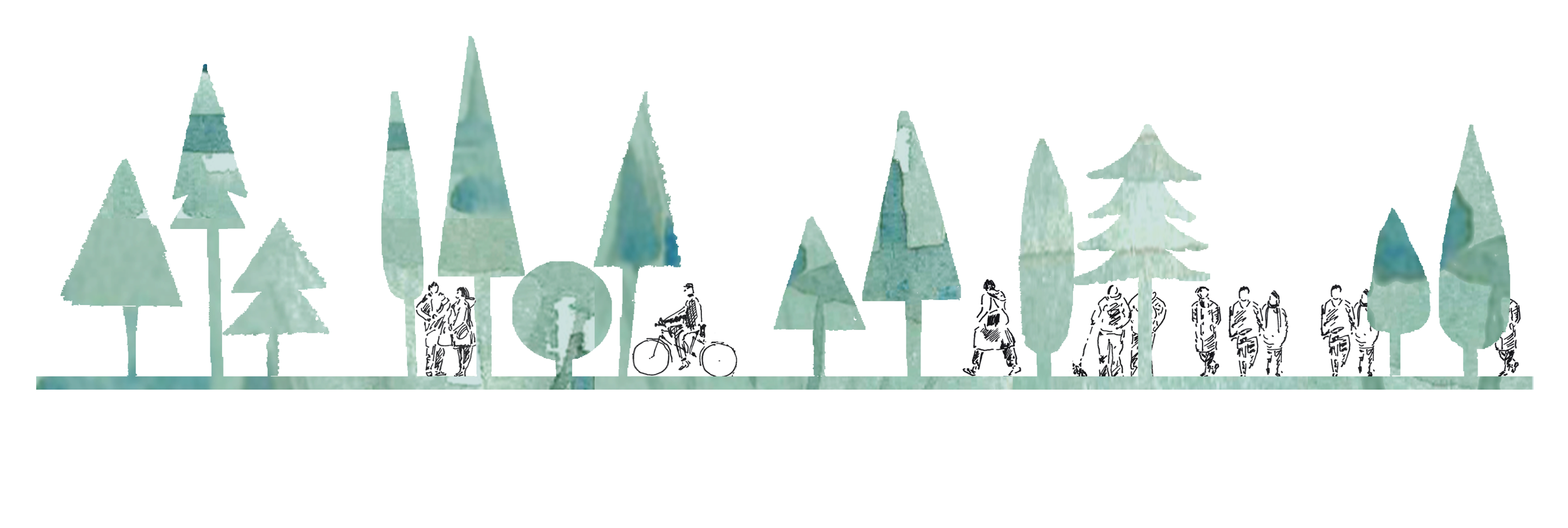
- improved health, well being and mental health
- space for social gathering
- play and learning
- shade and comfort
- noise control
Ecological Benefits:

- increases biodiversity
- buffer for pollution
- polination
- seed dispersal
Economical Benefits:

- increased land value
- improved air quality - less financial burden on health and emergency services
- tourism
- increased productivity and creativity
PRECEDENTS OF PATHS, WALKWAYS AND INTERVENTIONS:
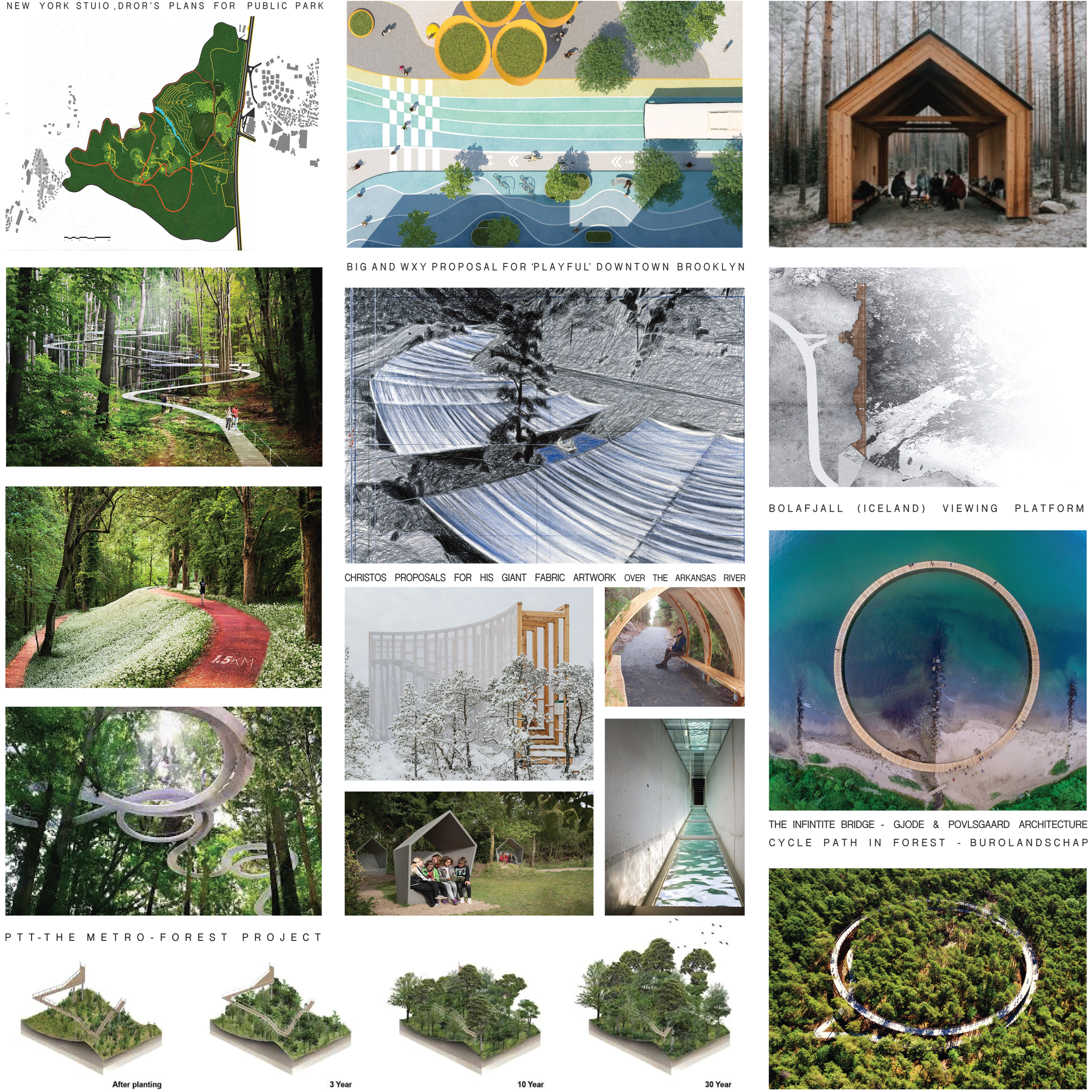

TREES AND PLANTS TO BE GROWN AT SITE:

THE PROCESS INVOLVED IN REPLANTING:

THE STAGES OF GROWTH AND SPREAD OF THE VEGETATION:

PLAY-DOUGH MODEL TO WORK OUT ROUTES OF PATHS:

TO DO :
(rough)plan with potential locations of interventions...will alter contors add paths and locations of interventions
VISUALISATIONS of the different ideas at site stages of trees growing with the interventions
VISUALISATIONS of the different ideas at site
— AQQ
Urban Lab - Design Agency
